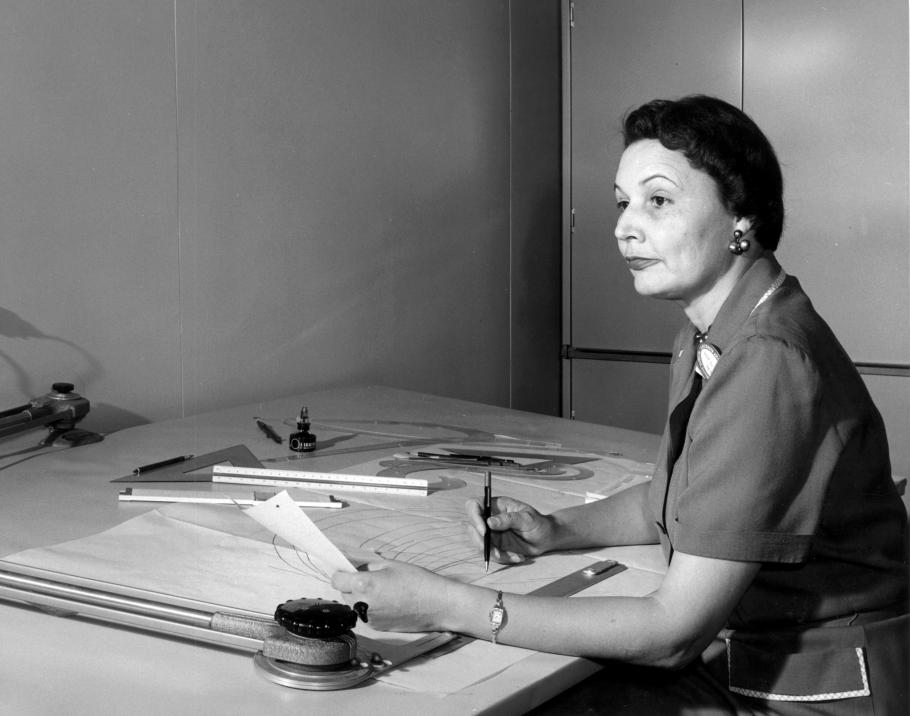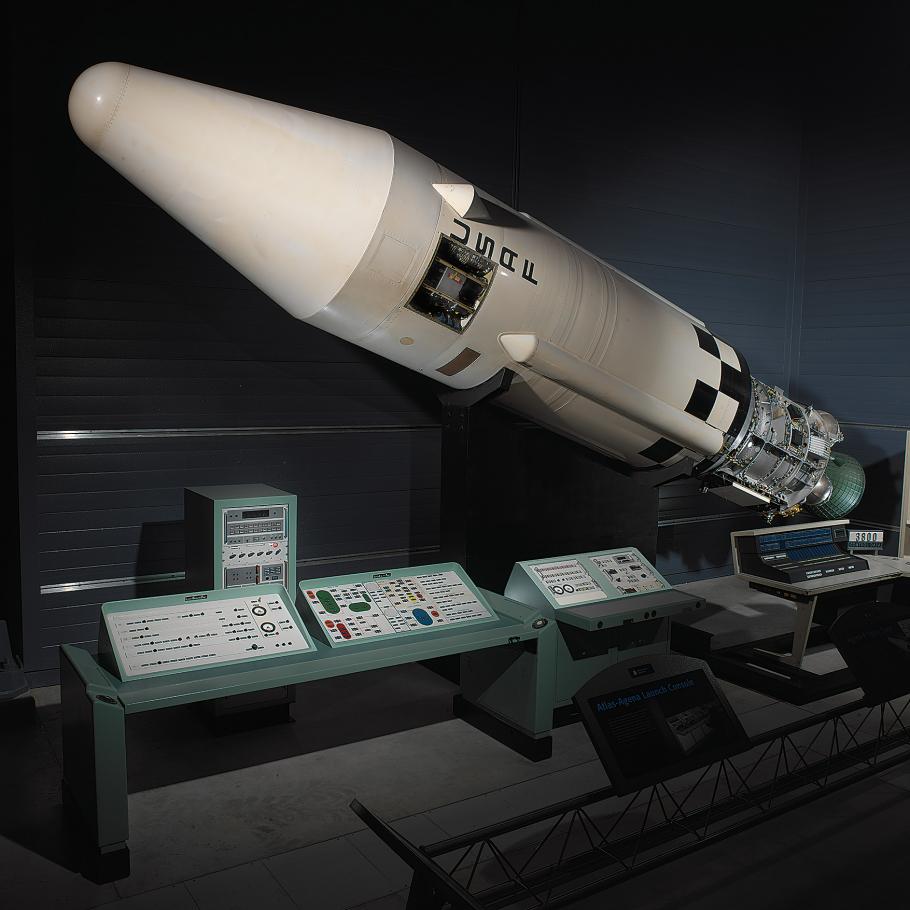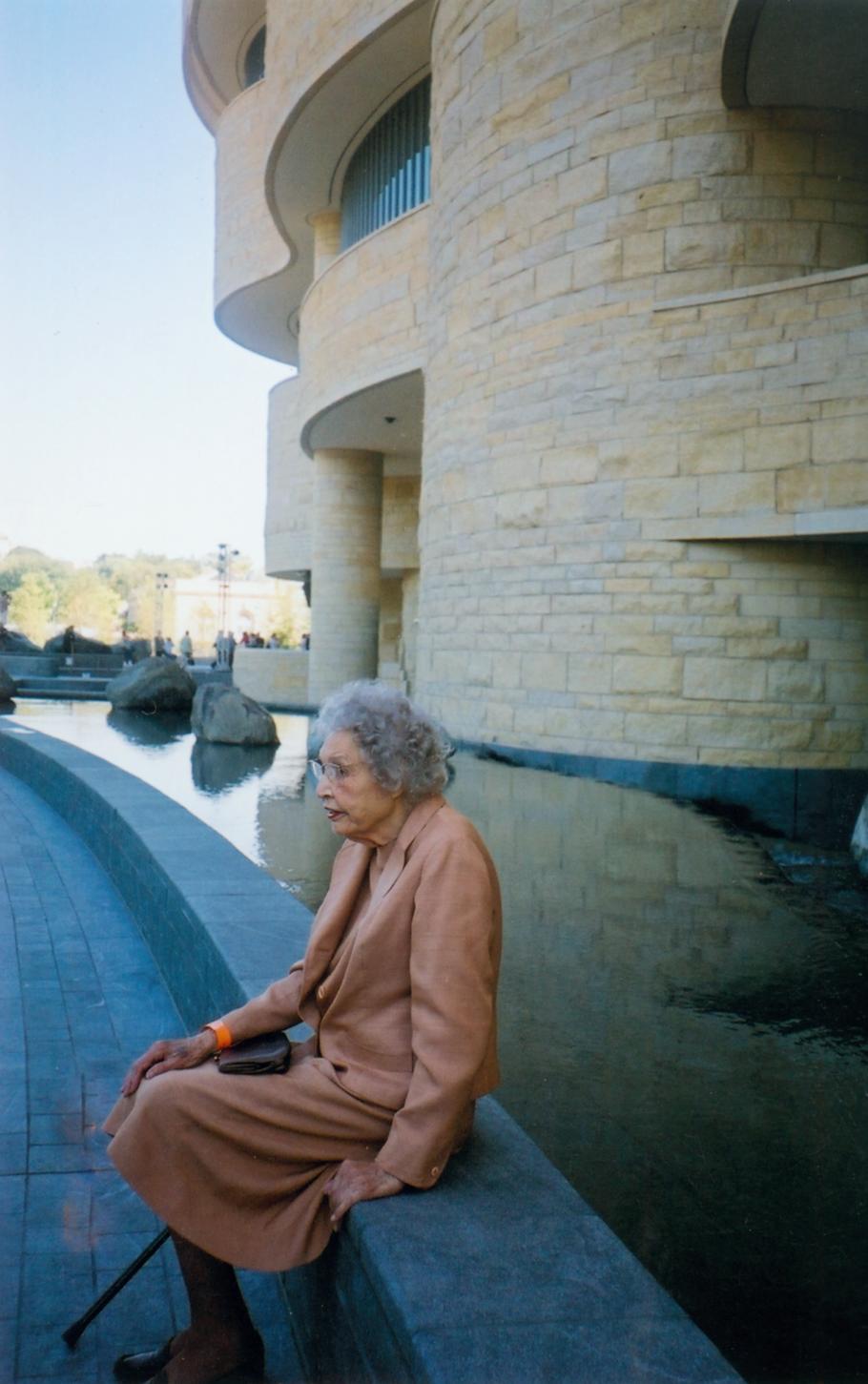Mary Golde Ross Wearing Her First Traditional Cherokee Dress
How did Mary Golda Ross of Park Hill, Oklahoma, become an engineer working on some of the most important—and top-secret—aerospace technologies of the Cold War? In her words, she "started with a firm foundation in mathematics and qualities that came down to me from my Indian heritage."

Aerospace engineer Mary Golda Ross at work, ca. 1960s. (Image courtesy of Northeastern State University Special Collections and Archives)
Ross was born in 1908 in Park Hill, Oklahoma, a town near Tahlequah, the capital of the Cherokee Nation. She was the second of five children born to William Wallace Ross Jr. and Mary Henrietta Moore Ross, both Cherokee citizens. Her great-great grandfather was John Ross, the Principal Chief of the Cherokee Nation.
Her early life was one full of Cherokee culture and history. When looking back on her primary school and high school years, Ross remarked, "I had as many teachers who were Indians as non-Indians. My high school math teacher was a Cherokee." After high school, Ross attended Northeastern State Teacher's College in Tahlequah where she graduated in 1928 with a degree in mathematics. Previously, the college was the site of the Cherokee Female Seminary, one of the first educational institutions for women west of the Mississippi River and one funded by a tribe.
Ross then became a teacher, instructing students in mathematics and science for nearly 10 years in public schools. In 1937, she accepted a position as an advisor to girl students at the Santa Fe Indian School, a government-run boarding school for Native Americans in New Mexico. These government schools were often lonely places, as the Native students were separated from their parents and families. It would have been important for students to have Native teachers and advisors instructing them.
During summer breaks, Ross returned to the classroom—this time as a student, rather than an educator. Between 1932 and 1938, she completed graduate coursework at Colorado State Teachers College (now the University of Northern Colorado), which culminated in a master's degree in mathematics. Continuing her education was important to her. Ross said, "the world is so technical, if you plan to work in it, a math background will let you go farther and faster."
Educating others was a key part of her life's work, in part because teaching was one of the few careers available to women with mathematics and science degrees due to sexist hiring practices in academic and industrial laboratories. The need for skilled mathematicians during World War II would soon change Ross's career path and launch her into unprecedented territory.
Like many other Native people, Ross answered the call to national service during WWII. In 1942, she joined Lockheed Aircraft Corporation in Burbank, California, as a mathematical research assistant. She was part of the Advanced Development Projects group, informally known as Skunk Works. Ross and her colleagues worked to improve the design of the P-38 Lightning, a fighter plane used by the US Army Air Forces, and other military aircraft. She specialized in the study of how aircraft respond to aerodynamic forces.
Passionate about her work, Ross's curiosity and love of learning led her to complete advanced coursework in aeronautical engineering at the University of California-Los Angeles Extension School. Through her studies, Ross qualified as a registered professional engineer in 1949. She was the first known Native American woman engineer. Ross's new title enabled her to take on more responsibility.
Meanwhile, political and technological developments opened up new areas of research. As a cold war emerged from the conclusion of WWII, the United States military identified a new weapon—missiles—as a top priority. Lockheed responded by forming a new company, Lockheed Missiles and Space Company. With this new company, Ross worked on many projects, including the submarine-launched Polaris missile and the Agena launch vehicle, which carried military, intelligence, and civilian payloads to space.

Ross made contributions to the US aerospace industry of immediate importance and lasting impact, though the full impact remains unknown as much of her work is still classified. Her work was also foundational. She contributed to NASA's Interplanetary Flight Handbook, Vol. 3 (1963), which detailed spacecraft flight paths to Mars and Venus. This resource informed the work of teams of human spaceflight researchers. Ross retired from Lockheed in 1973.
Ross had a lifelong commitment to service and education and was an advocate for women and Native people in engineering. She was a charter member of the Los Angeles chapter of the Society of Women Engineers (SWE), an organization that provided professional development and community for practicing engineers and supported mentorship and scholarship programs for engineering students. Throughout her involvement with SWE, Ross lectured in secondary school and college classrooms, funded scholarships, and served on the SWE national leadership board. She was also active in the American Indian Science and Engineering Society, founded in 1977 to support Native students at all levels in science and engineering. Ross was known as a "legend" among Native engineering students.
Ross encouraged the preservation and celebration of Native histories and cultures through her support of the Smithsonian's National Museum of the American Indian (NMAI). At the age of 96, Ross attended the 2004 opening of NMAI in Washington, D.C., which included more than 25,000 Native people from the Western Hemisphere in attendance. She wore a green calico Cherokee dress that her niece sewed for her. In speaking about the significance of the museum, Ross commented that NMAI "will tell the true story of the Indian, not just the story of the past, but an ongoing story." Ross was not only a long-time member of NMAI; she also bequeathed more than $400,000 to the museum towards an endowment.

Mary Golda Ross seated outside of the National Museum of the American Indian in Washington, DC. (Image courtesy of Northeastern State University Special Collections and Archives.)
Ross's legacy lives on in the technologies she designed, the people she inspired, and the museums, libraries, and archives that maintain records of her life and career. Artists, too, honor and share Ross's story. Oklahoma-based artist America Meredith, a citizen of the Cherokee nation, commemorated Ross in a painting entitled, Ad Astra per Astra, now in the collection of the National Museum of the American Indian. The title is a play on the popular Latin phrase, Per Aspera ad Astra ("through hardships to the stars"). Meredith's title translates as "to the stars through the stars" which draws from Cherokee cosmology about how spirits long ago lifted young boys into the sky, thereby forming the Pleiades. Meredith depicts Ross standing before a starry night sky with the RM-81 Agena to her right and a seven-pointed star (the seven clans of the Cherokee) overhead, symbolizing her dedication to her culture and career.

Ad Astra per Astra by America Meredith, depicting Mary Gold Ross. Image courtesy of the Smithsonian's National Museum of the American Indian.
tomlinsonmothe1966.blogspot.com
Source: https://airandspace.si.edu/stories/editorial/mary-g-ross-aerospace-engineer
Post a Comment for "Mary Golde Ross Wearing Her First Traditional Cherokee Dress"